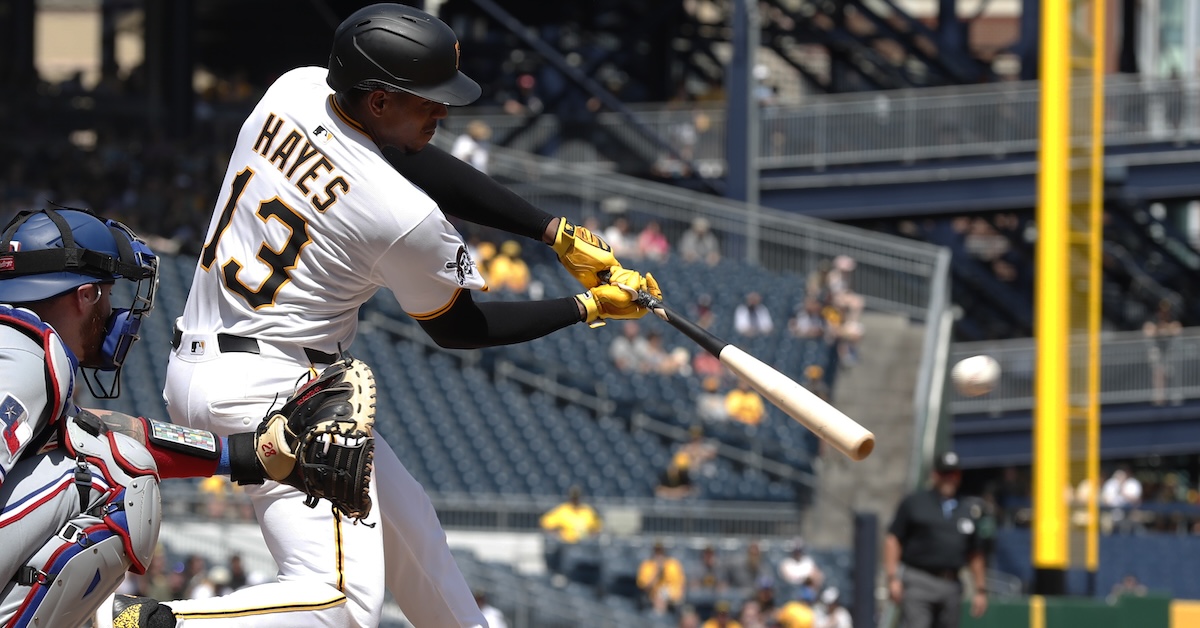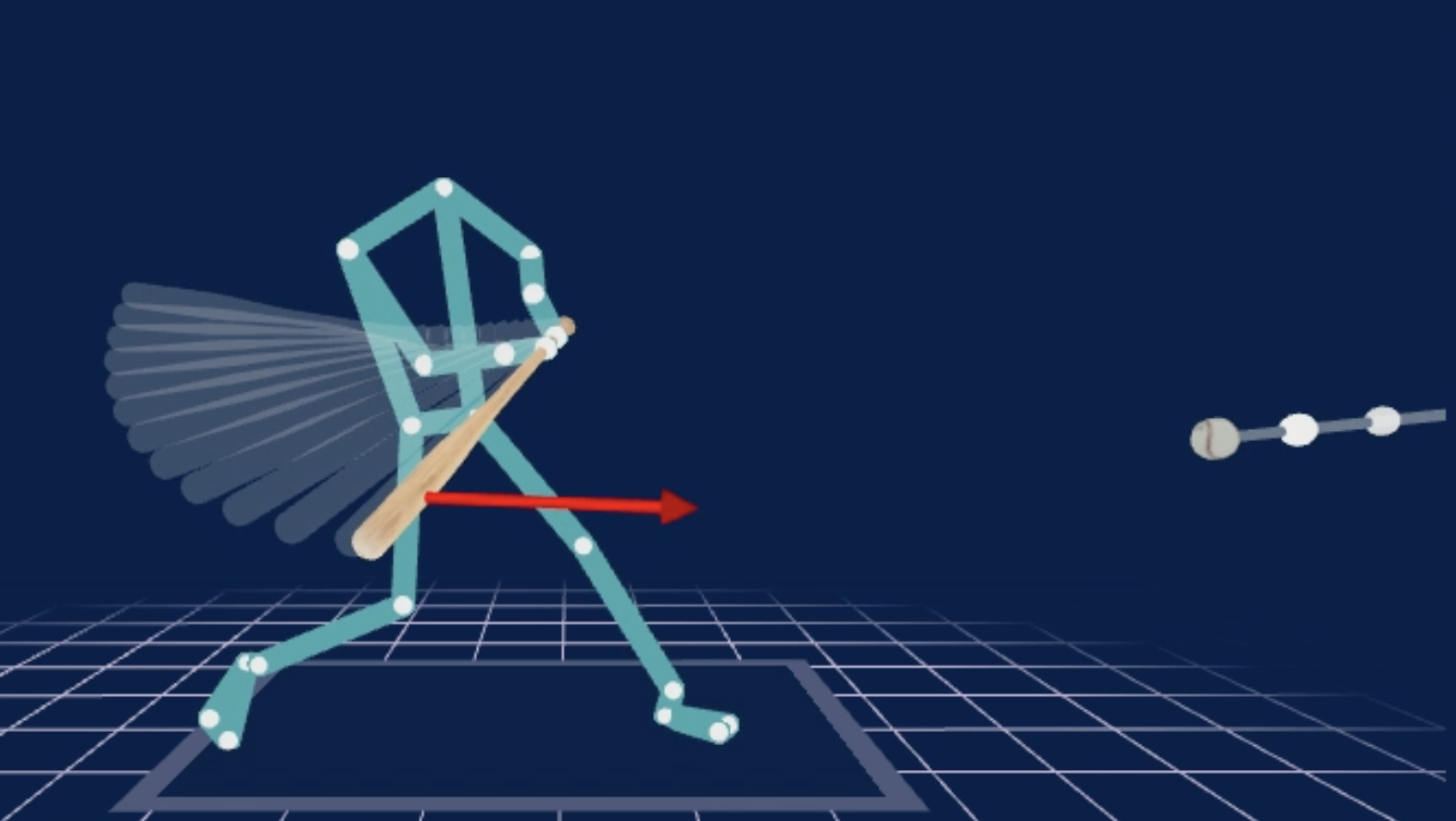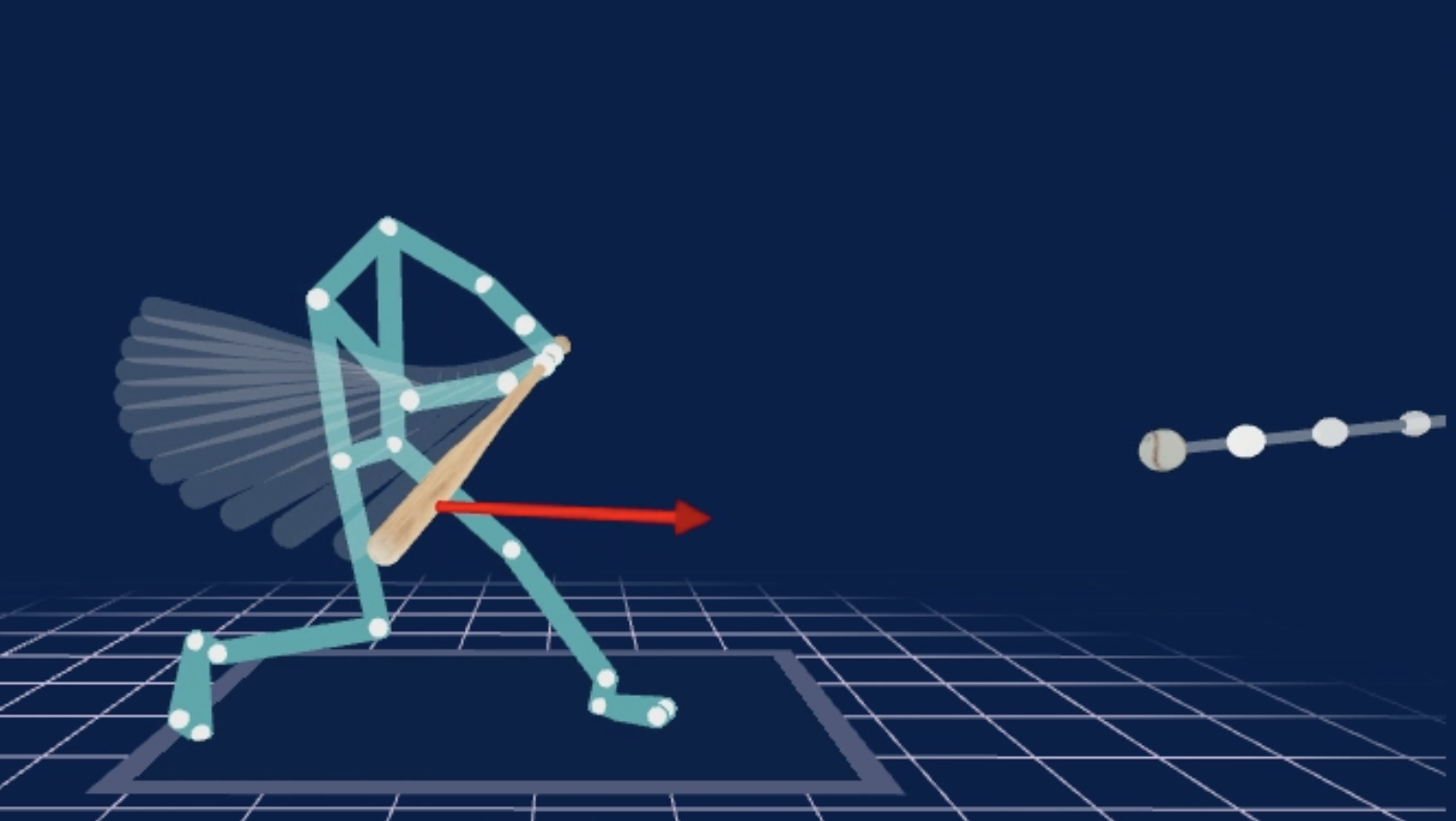Ke’Bryan Hayes Needs a Bat Path Fix

Since 2021, Ke’Bryan Hayes is the leader in OAA among all infielders. As one of the best defenders in the sport, his floor is very high. Even with his career 87 wRC+, he has still been worth about 3 WAR per 162 games. If he could be a consistently average offensive player, he’d be one of the most valuable players at his position. This is a story we all know. With his name swirling in trade rumors, you have to imagine other teams are thinking about the possibility more so now than in the past. His issues stem from his suboptimal swing path, and if he’s traded, that will be what his new hitting coach tries to fix.
In the last calendar year (459 plate appearances), Hayes has a 60 wRC+. That is bad! But despite those struggles, it’s not like he is completely lacking offensive ability. His bat speed is only a little below average. His strikeout and whiff rates are better than league average over the past three seasons. He hits the ball hard more often than not, and he chases at about an average rate. Those are all things you could work with if you’re trying to manufacture a league average hitter. But if you’re doing all this and your path is rarely working in an ideal direction, you’ll always have limitations on what you do when you actually make contact.
Some of the key batted ball metrics that summarize Hayes as a hitter are his second-percentile pulled fly ball rate, his 11th-percentile groundball rate, and sixth-percentile Sweet-Spot%. My initial reaction when looking at each of these metrics is that Hayes must be getting handcuffed and making contact way too deep in the zone (or deep relative to his center of mass). If you can’t keep the ball off the ground, this is a logical estimation. But interestingly enough, he’s actually 34th out of 219 qualified hitters this year when it comes to point of contact versus center of mass. Before explaining exactly how that oddity can happen, we have to check out Baseball Savant’s bat path highlighter. It’s easiest to understand by seeing for yourself:
Notice anything specific? Pay attention to the overlay of his bat once the downswing gets going. It takes an incredibly long time for him to get his bat sloping on an upward plane that matches the angle of the pitch. If you’re constantly working through a negative attack angle, then it’s going to take you more time and space to get to a positive one. In other words, the only ideal contact point he has to get any lift is way out in front of the plate. If he had a positive slope earlier on, he’d have more room for error. The next clip shows the same phase as above but with an arrow that guides you through the process of his attack angle.
Same thing here: That arrow is pointing downward for most of the swing. The best hitters in the league either match the plane early (think a contact hitter with a flatter swing) or work from a positive angle very early on (think a guy with light tower power). A swing that takes as long as Hayes’ does to match planes is going to generate a ton of groundballs.
OK, now that I’ve framed his swing, I want to show you a similar hitter with an identical average attack angle (five degrees) on the season whom I think is a reasonable comparison to Hayes, albeit with better performance: Alec Bohm. Like Hayes, Bohm’s bat speed is slightly below average, and he has the same attack angle; the difference is Bohm has managed a 102 wRC+ over the course of his career. Why is that? Well, let’s look at the same phase of his swing with the arrow highlighting the progression of his attack angle:
He gets to a neutral angle earlier in his swing. Most of that is related to how his hands make their entry into the hitting zone. His hands start behind his center of mass and then work through the plane of the ball. Don’t get me wrong, he doesn’t have the greatest bat path – that’s exactly why I’m referencing him – but unlike Hayes, Bohm doesn’t have a hitch that disrupts the plane his hands and barrel are moving on. I know it might be a little difficult to see that, so I’ve put two screenshots below of the moment where each player gets to a zero-degree attack angle:
Bohm

Hayes

The small dots over each joint are incredibly helpful here. Bohm is getting to a neutral plane closer to his back hip, while Hayes’ bat is completely ahead of his center of mass, meaning he gets on plane later in his swing. That narrow difference between them is enough to give Bohm more room for error to create launch at different depths in the strike zone. And as I said, it’s not like Bohm has one of the best paths in the game. He’s a league average hitter with a contact and gap-to-gap profile. If Hayes was to model his ideal game, it’d look something like Bohm’s.
Now that the diagnosis is in place, it’s time to decide on where Hayes should target adjusting within his swing. Let’s continue to focus on Hayes’ first move with his hands:
His knob is on a diagonal line downward for almost the entirety of this phase of the swing. Typically, when a hitter has their initial entry into the slot from where they want to fire, the knob of their barrel either straightens out or starts working upward. Hayes’ works down. That is what old-school folks have always referred to as a pushy swing. His hands are pushing forward too early relative to when he rotates. It’s very difficult for him to get his barrel under the ball with any variability.
Adjusting out of this can go in a few directions. One simple option is to start with his hands lower relative to where they are now so that he can’t push down when he starts swinging. Though if he feels comfortable in the higher slot, he could also remove the verticality of his barrel during his stance and bat comb, because right now, he isn’t able to flip the angle of his barrel fast enough to get on plane in time. Here’s a quick GIF of him in his setup and row to show you what I mean:
There’s a lot of a movement going on, and that’s how his barrel gets on plane. This is more of a philosophical concept, but when a hitter has a flatter swing (lower tilt, lower attack angle, etc), I have trouble understanding why they wouldn’t also start flatter during their stance or their row. By starting vertically and trying to flatten out, you’re throwing your body’s rotation off the natural path it wants to move on. There’s a reason why not a lot of hitters can swing like Ronald Acuña Jr. It’s just difficult to repeat. When in doubt, you might as well simplify things as much as possible.
If the Pirates decide to trade Hayes, the team that acquires him should suggest at least one of the changes I prescribed above to fix his bat path, and he should fully embrace it. There is a lot of room for growth here, he just needs to put himself in a better position for success.
Esteban is a contributing writer at FanGraphs. One of his main hobbies is taking dry hacks every time he sees a bat.

This was excellent.